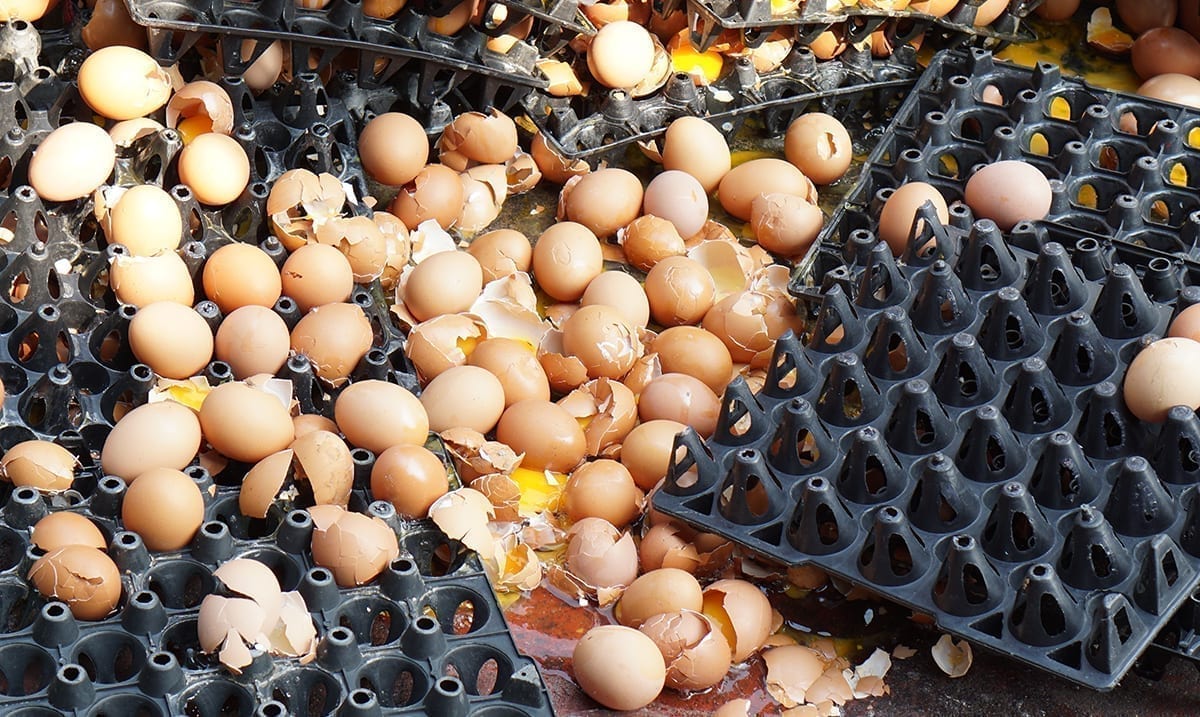With so many different places closed, it seems there is a lot of food going to waste. While most would assume that this food would be donated, a lot of it is being destroyed.
According to NY Times, in Wisconsin and Ohio farmers are actually ‘dumping thousands of gallons of fresh milk into lagoons and manure pits.’ While this might sound alarming, it seems to be common practice for milk when it cannot be sold off. NY Times also noted that in other places perfectly ripe vegetables are being plowed right back into the soil instead of being harvested.
While we are seeing grocery stores that are quite bare, some of the larger farms are struggling to get rid of their products. These farmers ultimately end up destroying millions of pounds of food because they cannot sell it. Because these farmers have few or no buyers for their crops, they’re on the other end of things.
Now, for those who might not be aware these farmers are specifically wholesalers who cannot necessarily pivot from wholesale to retail easily. Their sending food out to grocery stores or things of the sort would mean they need to make big changes that would take time and well, most are not going to do that or can’t do that at the moment according to Politico. With pausing production not an option for many either, throwing the product away is for some what they feel is their only option.
Politico reported as follows on the topic:
Richard Guebert Jr., Illinois Farm Bureau president, said his state’s meatpacking companies have fewer employees showing up because of concerns of being too close to other workers.
“The industry is backing up on bacon and other products that they put together as cut-outs, so they’re slowing down and not doing the volume that they had,” Guebert said.
“There’s a concern for pork producers because they just can’t turn their buildings on or off like you can an assembly line,” he added. From the time sows give birth to slaughter, “it’s a nine-month process that started nine months ago. Pigs continue to be born every day, whether they keep the whole capacity.”
In the meantime, major food distributors including U.S. Foods and Performance Food Group are begging the Treasury Department to prioritize loan applications from their sector as companies shift operations to supply retailers.
“This kind of transition, even if temporary, takes time and investment as we adjust our warehousing, logistics and purchasing processes to meet a consumer-facing market,” they wrote in a letter to the Trump administration.
A group of food worker associations also made an appeal to congressional leaders that any future aid package should “include support for America’s essential critical industry workers” through tax exemptions or direct payments.
In the U.S., an excess supply of food production is forcing some sectors to take extreme measures and ask for extra creative solutions from the government.
“Clearly we’re in a time of crisis,” said Gordon Speirs, owner of Shiloh Dairy in Brillion, Wis. “We’ve lost 25 percent of our income just through the crashed market. Now we face the reality of having to dump milk on top of that.”
Farmers in places like Florida and California have also been affected and it’s likely there are many across the US being hit hard. The amount of waste is enormous and it’s quite concerning. While this might not sound that intense to the average person, wasting food on such a scale can have serious ramifications in the long-run.
NY Times reported as follows on the topic:
The amount of waste is staggering. The nation’s largest dairy cooperative, Dairy Farmers of America, estimates that farmers are dumping as many as 3.7 million gallons of milk each day. A single chicken processor is smashing 750,000 unhatched eggs every week.
Many farmers say they have donated part of the surplus to food banks and Meals on Wheels programs, which have been overwhelmed with demand. But there is only so much perishable food that charities with limited numbers of refrigerators and volunteers can absorb.
And the costs of harvesting, processing and then transporting produce and milk to food banks or other areas of need would put further financial strain on farms that have seen half their paying customers disappear. Exporting much of the excess food is not feasible either, farmers say, because many international customers are also struggling through the pandemic and recent currency fluctuations make exports unprofitable.
“It’s heartbreaking,” said Paul Allen, co-owner of R.C. Hatton, who has had to destroy millions of pounds of beans and cabbage at his farms in South Florida and Georgia.
With so much food being produced and destroyed we don’t know what is to come in the future. While those who can are donating what they can the large amounts are leaving still much to be destroyed. What do you think could be done to help stop this huge issue?

